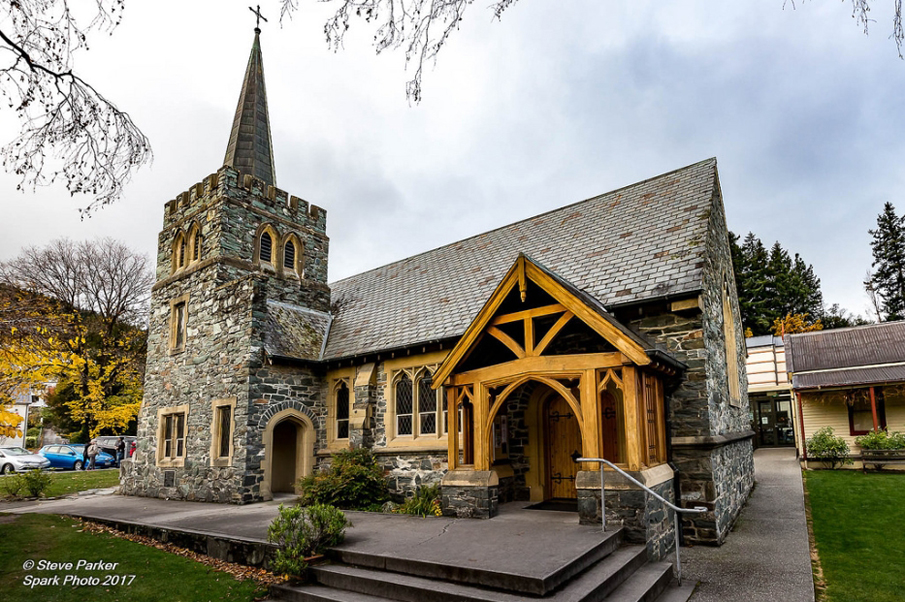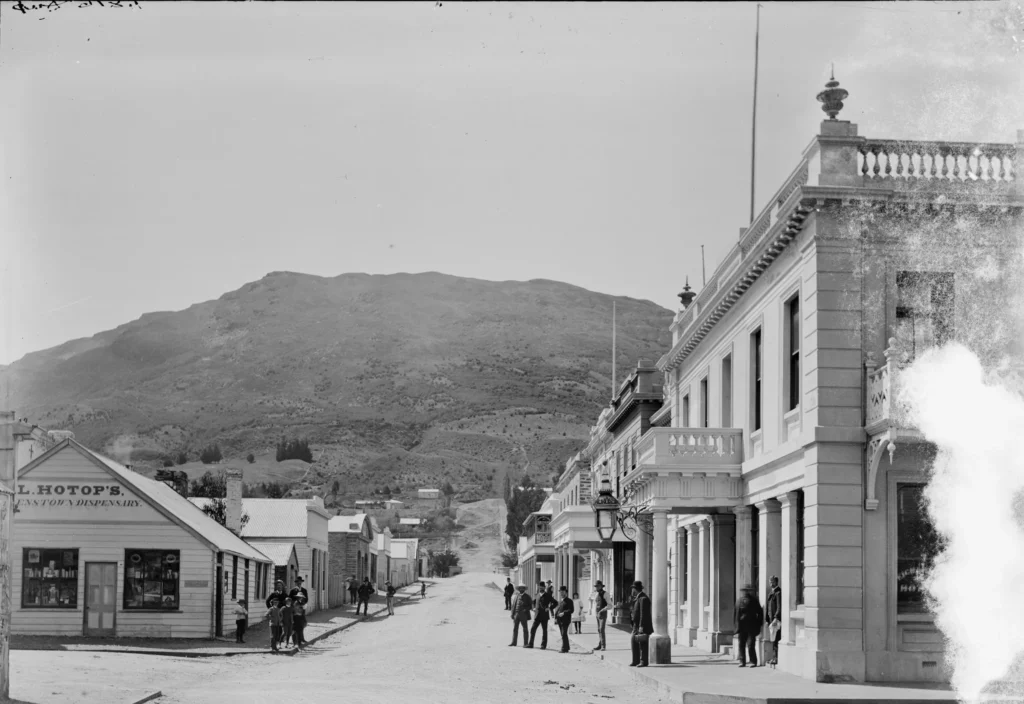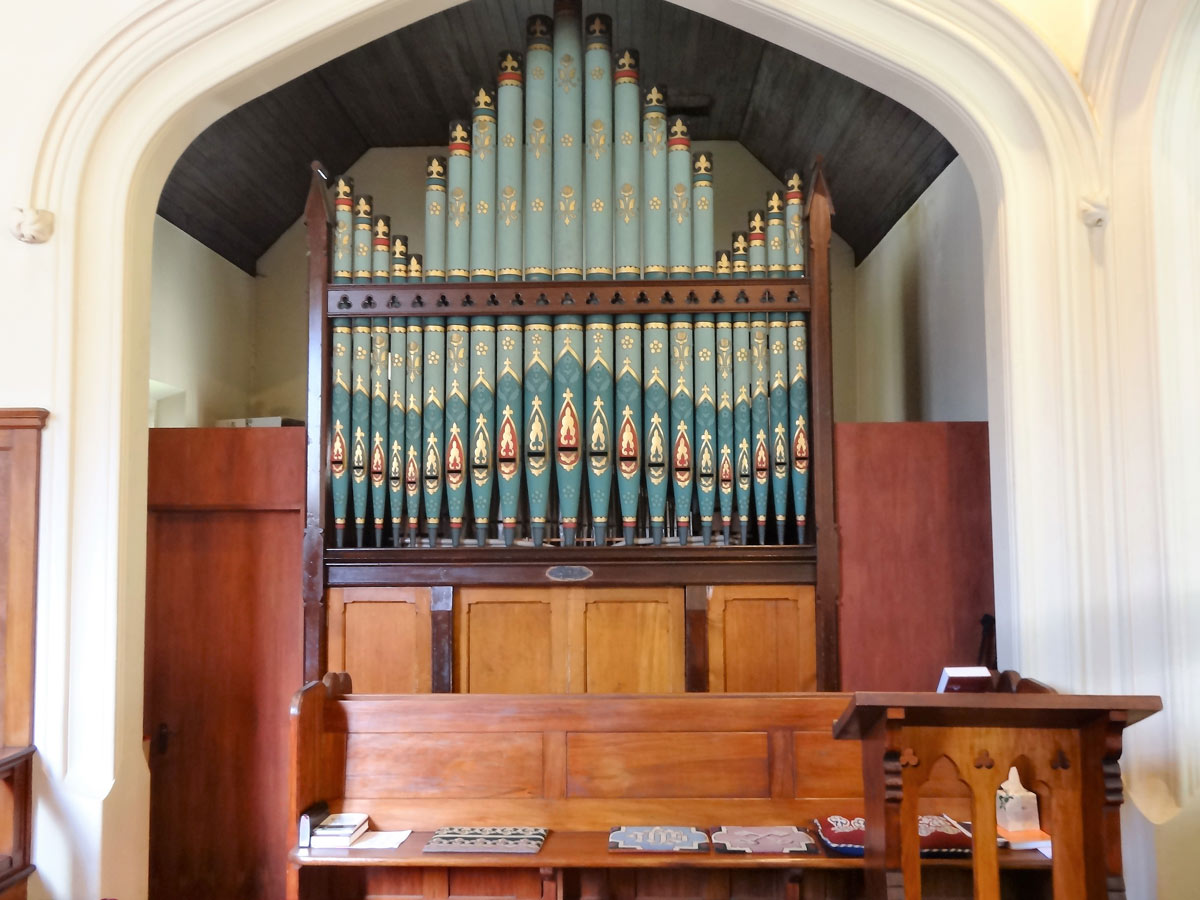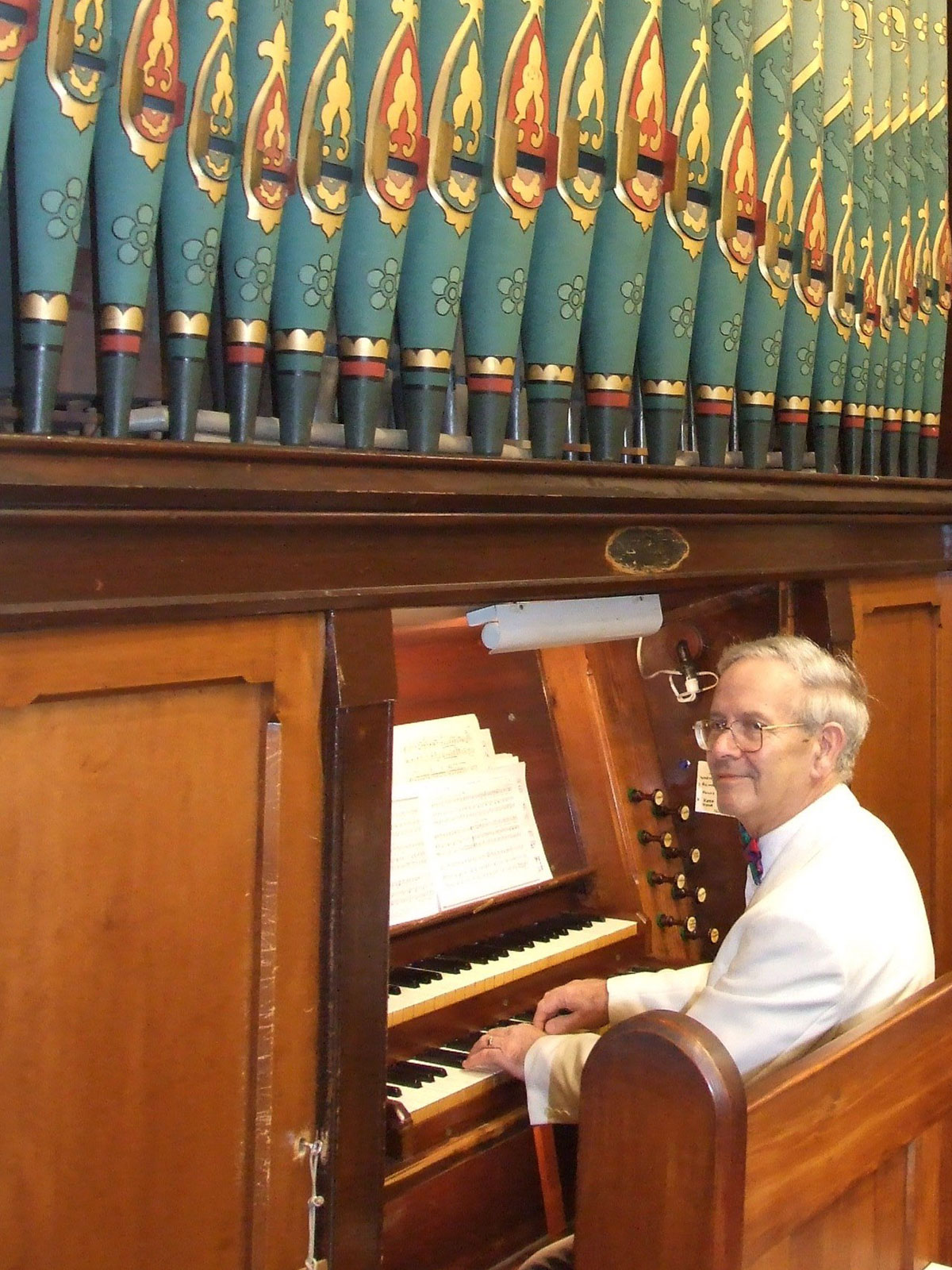St Peter’s Church
Located in the very heart of Queenstown, this much loved Church is a beautiful stone building set in park-like grounds.
Seating approximately 130 people, the Church has two beautiful stained glass windows complementing the architecture. The one over the altar, dedicated to the memory of those parishioners who lost their lives in the second World War, depicts ‘the Call of St Peter’, while the window over the font depicts the story of the Good Shepherd. A noteworthy item of furniture is the carved eagle lectern, which is the work of a Chinese man named Ah Tong, given in 1874.

History
The foundations of the Anglican in the Whakatipu were laid by the first settler William Gilbert Rees, who established a sheep station with its buildings located on the shores of Queenstown Bay in 1861. Rees was a devout Anglican and held regular services which were attended by the handful of men and one woman who worked for him.
Gold
Gold in large quantities was discovered near Lawrence, Central Otago, in the same year Rees settled in Queenstown, and subsequent discoveries were made in 1862, first in the Clyde and Cromwell area and then in the Arrow River near the present day Arrowtown.
Late in 1862 two of Rees’ own workmen found extremely rich gold in the Shotover River at Arthur’s Point 5 km from the station homestead. Almost overnight thousands of miners flocked to the area and a large bustling town soon surrounded Rees’ station buildings.
From the time gold was discovered until he left the area in 1867 Rees took a prominent part in the affairs of the new town and besides providing the essential food supplies for the early miners, was involved in many public and private enterprises.
Establishment of the Church
Among the early arrivals in the town was Richmond Beetham who was Resident Magistrate. He was a Lay Reader and very soon a small party of Anglicans with Rees and Beetham as their leaders had established an Anglican community and were holding Church services. The visit of Bishop Harper in March 1863 no doubt quickened the interest of the Anglicans and soon plans were in hand to build a Church on the present site forwhich arrangements had been made to purchase from the Provincial Government. Timber from the head of the Lake was used in the construction and the cost was largely financed by advances from some of the parishioners. There was a major setback in June when a storm badly damaged the partially built Church, but the determination of the congregation saw the building completed in July 1863.
First Vicar
Services and Sunday School continued on a regular basis taken by lay people and it, was not until early 1869, a Vicar, the Rev’d Richard Coffey, was appointed. Besides the pastoral care of Queenstown and Arrowtown Communities, the Vicar had to travel by foot and horseback over dangerous mountain tracks to minister to the scattered flock. To accommodate the Vicar and his family, a home was built and part of this building is still in use today as the Parish Centre. Over the years as the congregation increased, several additions were made to the Church building, the final one in 1906. At the same time as this extension was made, the present pipe organ was purchased second hand from All Saints, Dunedin. Its origin is not known but it is probably of English manufacture and was first installed at All Saints Church in 1874. In the previous year, the hall in Earl Street was built. Two donations, one of the land, and the other of £250 to erect the building, both from parishioners, made this possible.
The New Church
The present Church was built in 1932 and being free from debt was consecrated by Bishop Richards, Bishop of Dunedin. The Church was designed by J. McDowall Smith of Dunedin, modelled on the traditional lines of the English parish church using Gothic details. The exterior walls were faced with greywacke stone obtained from the lake edge on the park peninsula. Funds to build the Church came largely from three main sources, all legacies. The largest of £1500 was made in 1911 by Thomas Hicks to erect a Church in stone or concrete. In 1927 £300 came front Mr A.D. Lubeckie who had owned a business in the town in its early days and had been an office-bearer in the early church. In the same year, £100 came from the estate of the first Vicar, the Rev’d Richard Coffey. As the large legacy by Thomas Hicks had made the new Church possible, the Lych-gate was erected by the parishioners in memory of this generous benefactor. The old wooden Church was given to the neighbouring parish of Dunstan. It was dismantled, taken to Omakau and re-erected. The delightful old building is still in use serving the people of Omakau. It is named after St. Mary the Virgin.
Family History Records
All our older archives are housed in the Hocken Library which is part of the University of Otago in Dunedin along with all the other records of the Anglican Diocese of Dunedin. Another really good source of historical information is the Lakes District Museum in Arrowtown



St Peter’s Pipe Organ was first built and installed in All Saints Church in Dunedin in 1874, then it was relocated in the original wooden 1863 St Peter’s Church in Queenstown in 1906. At that time a special addition to the church was built to accommodate it.When the present stone Church was built in 1932, it was designed with a special alcove to accommodate the historic organ. The original hand bellows were replaced with an electric motor. Some restoration work was carried out in 1992, but because of insufficient funds, only half the work was carried out.
In a 1982 special report, John Stiller wrote:
“This organ is one of the finest historic organs in NZ. It is most surprising that its existence is almost completely unknown in the NZ organ world. A worn paper label above the console reads: ‘John B. West, Organ Builder, Dunedin, New Zealand’, however, it appears that this label has been ‘pasted over’ the position occupied by a former label. Various features of the organ show resemblances to the work of the Australian organ builder William Davidson, and the English organ builders Willis, Conacher, Gray and Davidson, and Hunter. The only major alteration made to this instrument has been to the exchanging of the Swell Horn Diapason and the Swell Principal; a particular change which would be unwise to undo. This excellent organ represents a rare example of an almost completely untouched nineteenth-century instrument. Its tonal brilliance and clarity suggest that its original voicing has not suffered from later interference. The use of alternating colours in the display pipe decorations adds a great deal of interest to the appearance of this origin.”
The configuration of stops is as follows:
Great (C-g3)
- Open Diapason 8
- Clarabella 8 (c0-g3)
- Dulciana 8 (c0 – g3)
- Stopd. Diapason Bass 8 (c-b)
- Principal 4
- Wald Flute 4 (c0-g3)
- Twelfth 2 2/3
- Fifteenth 2
Swell (c-g3)
- Horn Diapason Sw.8 (c0-g3)
- Lieblich Gedacht Sw. 8
- Principal Swell 4
- Cornopean Sw.8
Pedals (c-e1)
- Bourdon pedals CCG 16
Couplers
- Swells to pedals
- Swell to Great
- Great to pedals